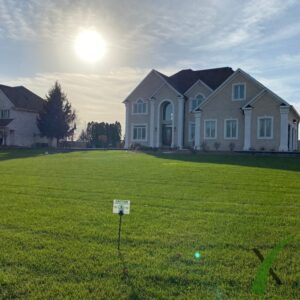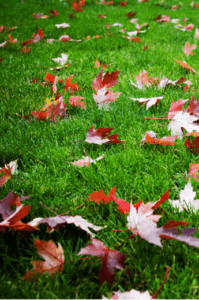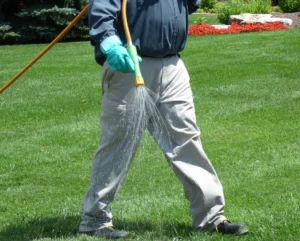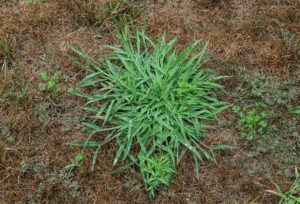Table of Contents
Every homeowner wants their lawn to look full and green all year round. It’s the first thing people see when they visit your home, and a nice lawn makes a great first impression. On top of that, no one wants to go outside and play on a brown lawn. Lawn care and maintenance promotes healthy grass growth and a green lawn no matter the time of year.
Common lawn care services that help revive a patchy lawn include aeration and overseeding. These services help bring nutrients and water deeper into the soil and encourage new grass to grow. Our lawn care experts will typically aerate your soil before overseeding to ensure the seeds reach into the soil and grow strong.
If you have questions about lawn aeration and overseeding, you’ve come to the right place. This complete guide will go over the basics of aeration and overseeding, the benefits of these lawn treatments, and what you can do to prepare your lawn for these treatments. This way, you can make an educated decision on what lawn care treatment is right for your grass.
Understanding Core Aeration and Overseeding
We’ve mentioned how aeration and overseeding can keep your lawn healthy, but what are these treatments?
What is Core Aeration?
To start, aeration involves using a specific tool to poke small holes in your lawn. These holes allow air, water, and nutrients to reach deeper into the soil and strengthen the roots of the grass. This service is great for impacted lawns where the soil is too dense for air or water to get absorbed properly.
Another aeration option is liquid aeration. Instead of poking holes in the lawn, liquid aeration uses a chemical solution to break up compacted soil and create small pores. These pores allow water and air into the soil without carving noticeable holes or tunnels in your yard.
What is Overseeding?
Alongside aeration, overseeding consists of adding a thin layer of grass seeds to your lawn while focusing on dead or patchy areas. These seeds require gentle care and frequent watering, and over time new grass will grow and fill in the brown areas of your lawn. Our lawn care experts will look at your lawn and help you choose a grass seed that works best for your current lawn.
These two services are typically done together to improve your lawn and promote new grass growth. An ExperiGreen lawn care professional will aerate your lawn first to create those small holes in the dirt. From there, we will scatter the grass seeds. This way the seeds can fall into the little holes and take to the soil better, growing into healthier and stronger grass. Both services combined keep your lawn green and vibrant all year long.
How Often Should Aeration and Overseeding Be Done?
Aeration and overseeding services should be done once a year to keep your grass healthy. Think of them like the yearly checkups you get for your pets. These services give your lawn a little health boost each year so it stays nice and healthy. Regular maintenance and upkeep prevent your lawn from browning and keep it fuller for longer.
For the best lawn results, hire a lawn care professional to help with aeration and overseeding. They have the skills and tools necessary to get the job done quickly and give your home a luscious and full yard of grass.
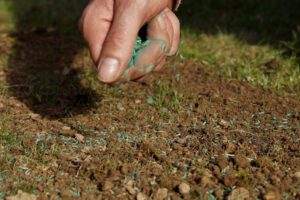
When is the Best Time of Year to Aerate and Overseed?
Aerating and overseeding your lawn is not a lawn care task you can do whenever you want. Grass grows at different rates depending on the season, and you want to maximize healthy lawn growth that will last throughout the year. For this reason, it is recommended to aerate and overseed your lawn during the fall season.
Why do it during the fall when winter is just around the corner? That’s exactly why the fall is the best time to treat your lawn. During the fall season, your grass is growing more roots and stronger grass to survive through the winter. Aerating and overseeding your lawn during this time strengthens your lawn and gives it the resources it needs to thrive once the snow melts in the spring.
Overseeding and aerating your lawn in the fall ensures your lawn will survive the winter and not be brown when springtime rolls around.
Tips & Insights: Overseeding in the Spring vs Fall
Benefits of Aerating and Overseeding Your Lawn
Aerating and overseeding your lawn improves the overall health and appearance of your lawn. These services can reduce brown patches and rejuvenate a dying lawn. Any bare or dead patches in your lawn will get filled with new and healthy grass. A fuller lawn also helps with weed control, so you’ll have fewer weeds in your yard.
Overseeding also helps your lawn fight against pests and diseases. You can introduce new types of native grass into your lawn, and these new grasses will strengthen your lawn’s defense against bugs and potential diseases.
You’re also left with a vibrant and full lawn that is aesthetically pleasing and improves your home’s curb appeal.
Additional benefits of aerating your lawn include:
- Reduces Soil Compaction: Lawn aeration helps loosen heavily compacted soil and encourages water and nutrients to reach further down.
- Promotes Root Growth: Since water, nutrients, and air can better reach into the soil, the roots of your grass will grow faster and stronger. This makes your overall lawn stronger as well.
- Controls Lawn Thatch: Thatch is the top layer of soil that consists of leaves and other natural lawn debris. If the thatch gets too thick, water and air can’t get into the soil. Aeration breaks up this thatch and promotes better lawn growth.

How to Prepare Your Lawn for Aeration and Overseeding
For the best results, it’s best to prepare your lawn before you aerate and overseed it. This sets your lawn up for success and ensures the new seeds take well to the soil and grow.
Mow your lawn short and keep it that way up until you aerate and overseed it. This allows water and nutrients to better reach the soil, and it gives the new seeds better odds of reaching the soil and growing roots. You can also clear off any debris in your lawn such as leaves, branches, and rocks. This creates a clean slate and makes aeration and overseeding smoother.
From there, be sure to water your lawn and ensure it’s hydrated before aerating and overseeding. This doesn’t mean drown your lawn until there’s standing water, but rather make sure the soil is damp when the new seeds are planted. Seeds need wet soil to settle in and start rooting. Lastly, choose a fertilizer that works for your lawn to give it a little boost of nutrients before aerating and laying the new seeds.
Aerating Your Lawn
Once your lawn is ready to go, it’s time to begin the aeration process. Aeration is done before overseeding, that way the soil is prepped for the new grass seeds. This process requires a specific aeration tool that pokes the small holes into the soil without tearing up your grass. There are both manual and automatic versions of this tool, but the process is the same.
Our lawn care experts at ExperiGreen have the specific tools needed to do the job right. They have years of training and experience to maximize your results. We offer extensive lawn aeration services, including both manual and liquid aeration. We’ll work with you to create a lawn care plan that works for you and your lawn.
Tips & Insights: What is Liquid Lawn Aeration?
Overseeding Your Lawn
Once your lawn is aerated, it’s time to move on to overseeding. ExperiGreen lawn care experts will use a specific seeding tool to distribute the seeds evenly across your yard. We’ll focus on areas that are patchy or brown, but new seeds will also strengthen green areas of your lawn.
We’ll use seeds that are native to your area and are compatible with the current grass in your lawn. The seed options include the same grass type as your current lawn or a different grass seed that works well with the rest of the grass. Adding variety can strengthen your lawn against pests and diseases, but don’t pick a grass that will compete with the other grass for nutrients and water. ExperiGreen will work with you to choose a grass seed that works best with your lawn.
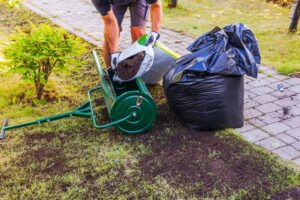
Common Mistakes to Avoid When Aerating and Overseeding
Let’s go over some common mistakes when aerating and overseeding your lawn. Without the proper equipment, you can cause more damage to your lawn and prevent the new seeds from growing.
Another common mistake is not keeping the grass seeds damp for the first couple of weeks. The soil needs to remain damp so the seeds can settle in and start to root. If you let the soil get too dry, the seeds will not grow and will eventually die.
These mistakes can set your lawn back and even make it look worse than when you started. There’s also the risk of the seeds not properly taking to the soil, leading to poor grass growth and fewer results. Avoid these mistakes as best you can to maximize grass growth and overall lawn health.
Key Takeaways About Aeration and Overseeding
- Aeration and overseeding are great lawn care services that keep your lawn looking healthy and full.
- Aeration creates small holes in the soil that break up compacted soil and allow water, air, and nutrients to better penetrate the soil. This in turn makes your grass grow stronger.
- Overseeding consists of spreading a layer of grass seeds on bare or dead patches of your lawn. These seeds grow into healthy new grass that fills in the gaps in your lawn and keeps it looking green and healthy.
- Aeration and overseeding can be done at the same time to maximize new grass growth and strengthen your lawn.
- The best time to aerate and overseed your lawn is during the fall. This way, your lawn is strong enough to survive the winter.
- You can prepare for your aeration and overseeding services by keeping your lawn short.
Choose ExperiGreen to Handle All of Your Aeration and Overseeding Needs!
If core aeration and lawn overseeding makes sense at your home, contact ExperiGreen and let experienced technicians make this important maintenance and repair job a no-brainer.


